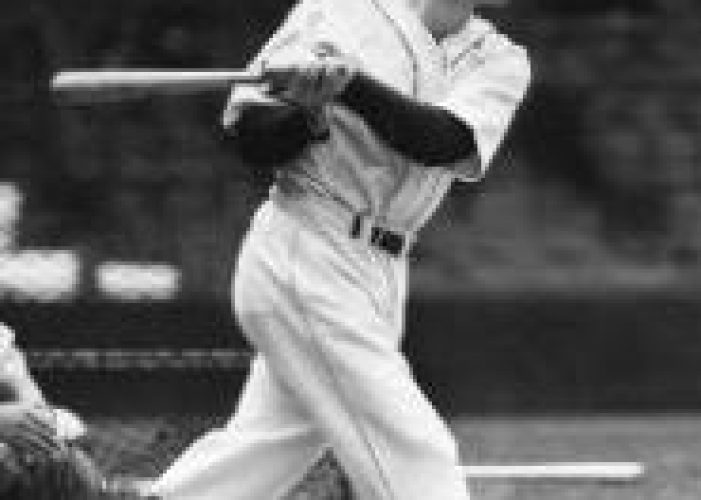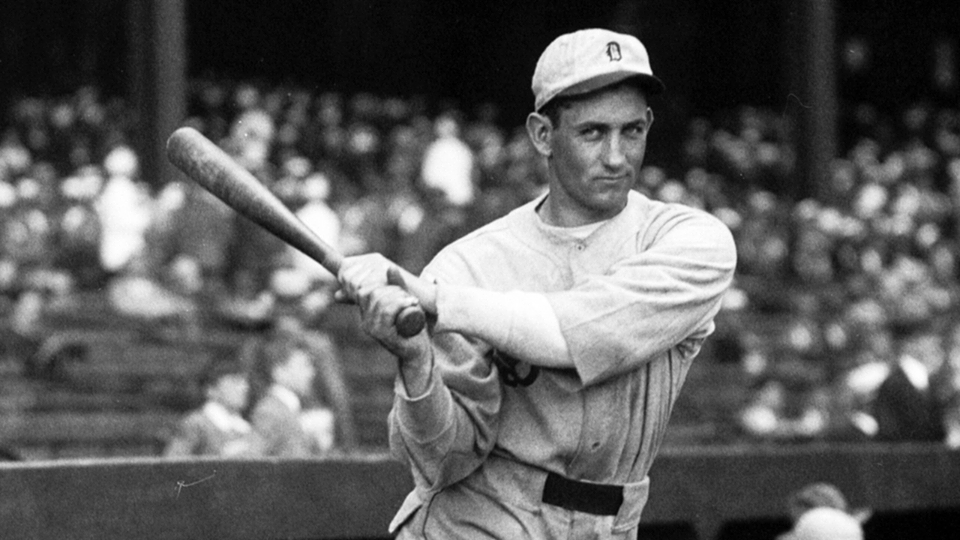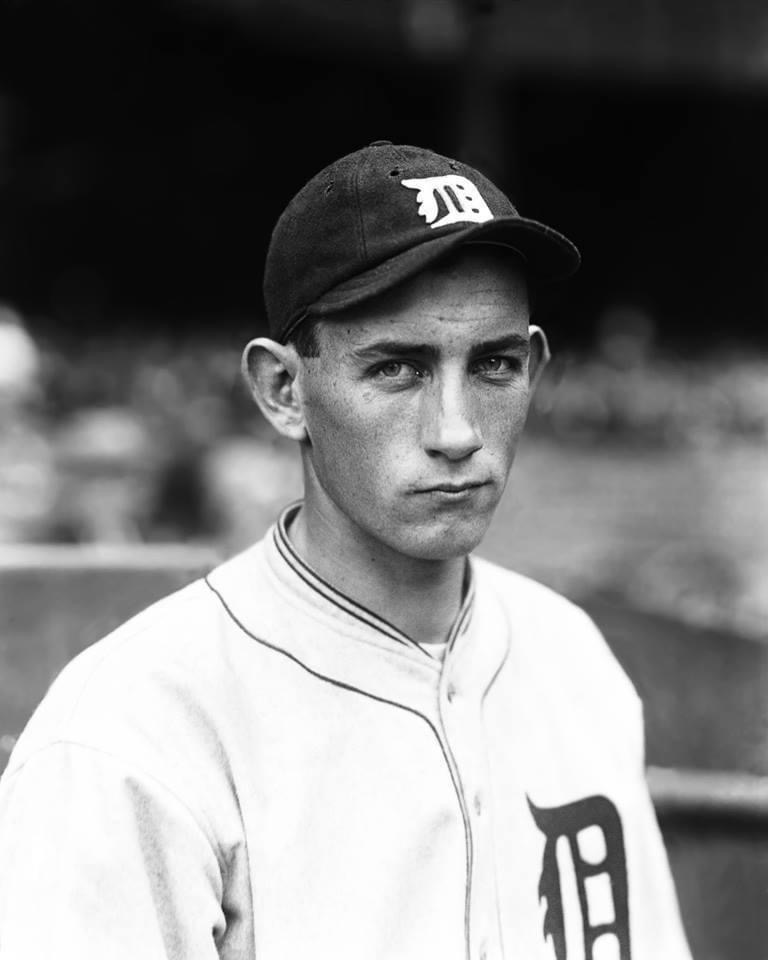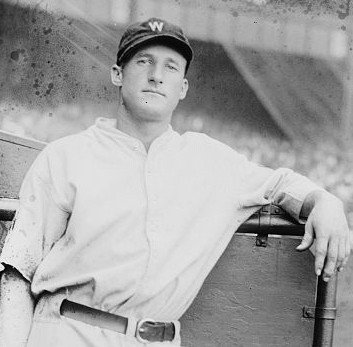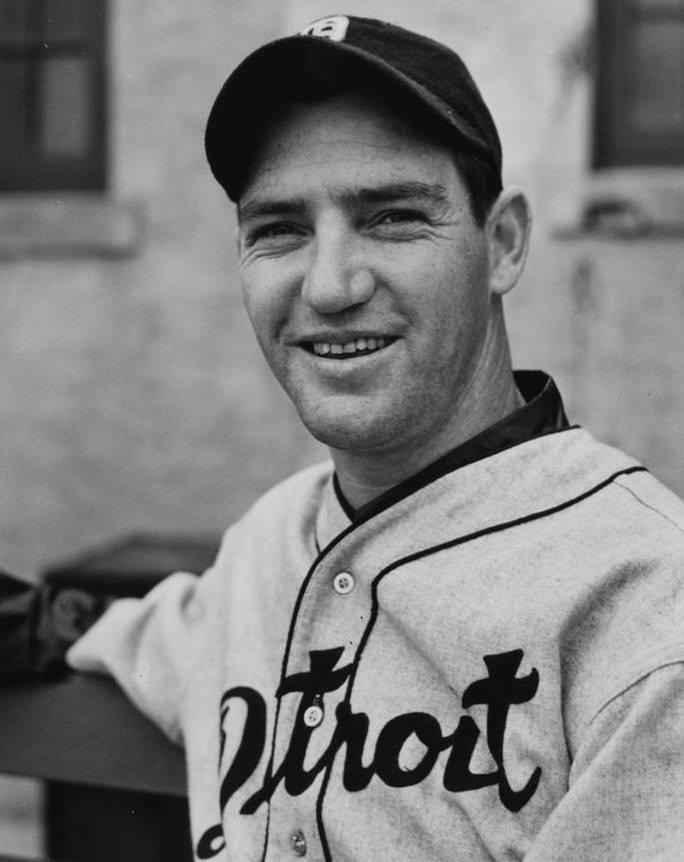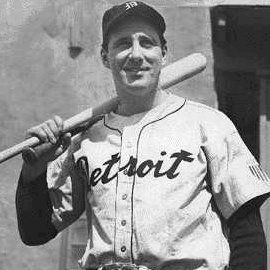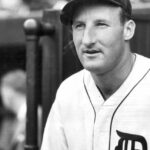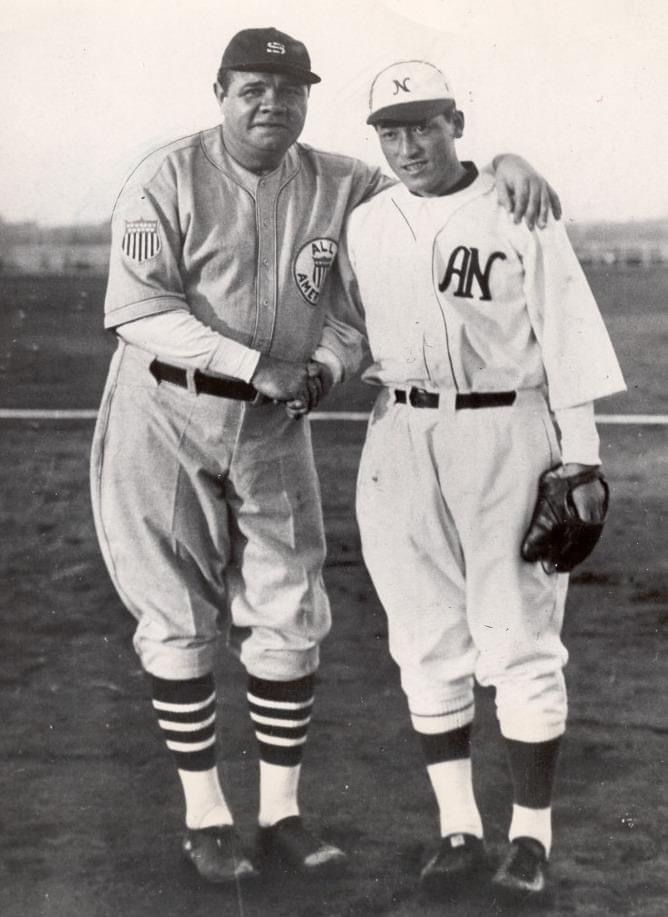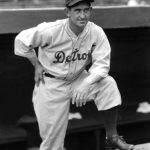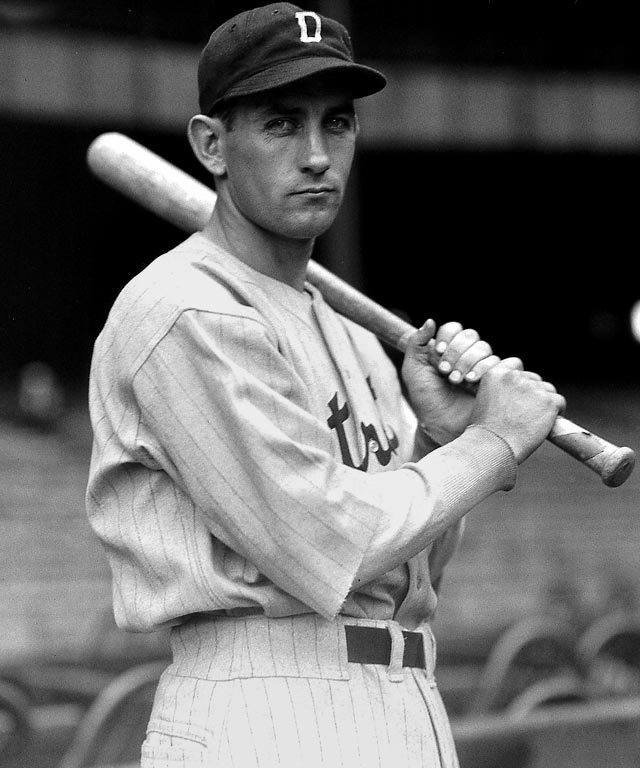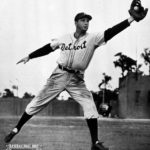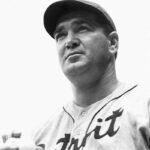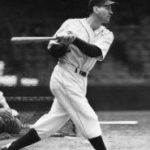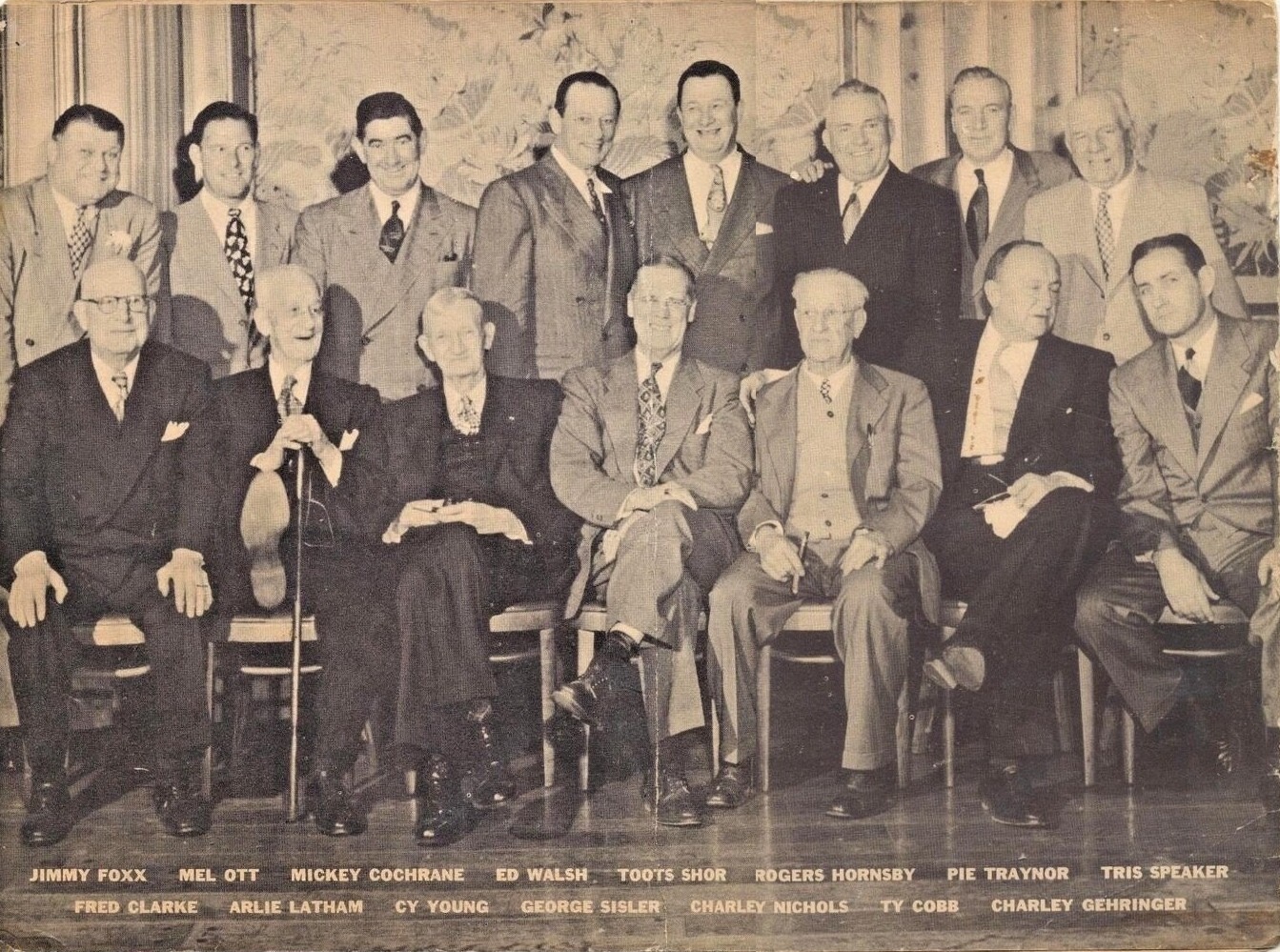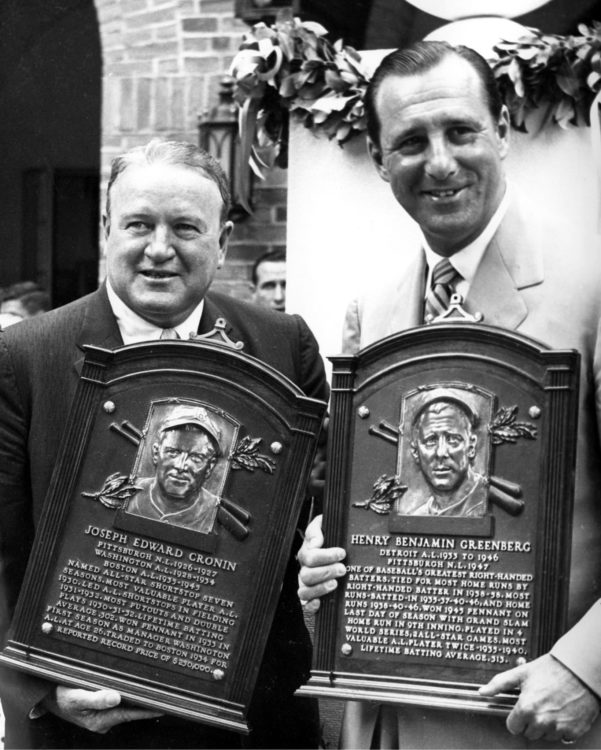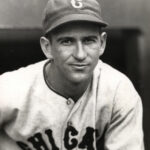Charlie Gehringer
Position: Second Baseman
Bats: Left • Throws: Right
5-11, 180lb (180cm, 81kg)
Born: May 11, 1903 in Fowlerville, MI us
Died: January 21, 1993 in Bloomfield Hills, MI
Buried: Holy Sepulchre Cemetery, Southfield, MI
High School: Fowlerville HS (Fowlerville, MI)
School: University of Michigan (Ann Arbor, MI)
Debut: September 22, 1924 (6,071st in major league history)
vs. BOS 0 AB, 0 H, 0 HR, 0 RBI, 0 SB
Last Game: September 27, 1942
vs. CLE 1 AB, 0 H, 0 HR, 0 RBI, 0 SB
Hall of Fame: Inducted as Player in 1949. (Voted by BBWAA in Runoff Election on 159/187 ballots)
View Charlie Gehringer’s Page at the Baseball Hall of Fame (plaque, photos, videos).
Full Name: Charles Leonard Gehringer
Nicknames: The Mechanical Man
View Player Info from the B-R Bullpen
View Player Bio from the SABR BioProject
Nine Players Who Debuted in 1924
Charlie Gehringer
Al Simmons
Earle Combs
Freddy Lindstrom
Chick Hafey
Red Ruffing
Hughie Critz
Max Bishop
Glenn Wright
The Charlie Gehringer
Teammate Team
C: Mickey Cochrane
1B: Hank Greenberg
2B: Del Pratt
3B: Marv Owen
SS: Billy Rogell
LF: Harry Heilmann
CF: Ty Cobb
RF: Goose Goslin
SP: Tommy Bridges
SP: Hal Newhouser
SP: Schoolboy Rowe
SP: Dizzy Trout
SP: Virgil Trucks
RP: Chief Hogsett
M: Del Baker
Notable Events and Chronology for Charlie Gehringer Career
Baseball’s premier second baseman during the 1930s, Charlie Gehringer was among the greatest players to ever man the position. A superb all-around player who excelled at every aspect of the game, the Detroit Tiger second-sacker led the American League in numerous statistical categories over the course of his career, including batting average, runs scored, hits, triples, doubles, stolen bases, putouts, and assists. Gehringer helped lead the Tigers to three pennants and one world championship won a Most Valuable Player Award and represented the American League at second base in each of the first six All-Star Games. He did so without much fanfare, and in such a consistent manner that he eventually came to be known as The Mechanical Man.
Biography
Born in Fowlerville, Michigan on May 11, 1903, Charles Leonard Gehringer grew up on a farm just outside the city of his birth. After attending Fowlerville High School, Gehringer enrolled at the University of Michigan, some 30 miles from the family farm, in 1922. He was discovered one year later playing college ball by Detroit Tigers left fielder Bobby Veach, who subsequently brought the 20-year-old second baseman down to the Tigers training facility for a tryout. Gehringer so impressed Detroit player-manager Ty Cobb that the legendary Tiger star urged club owner, Frank Navin, to sign him to a contract on the spot. Cobb was later quoted as saying, “I knew Charlie would hit, and I was so anxious to sign him that I didn’t even take the time to change out of my uniform before rushing him into the front office to sign a contract.”
Gehringer spent the 1924 and 1925 campaigns in the minor leagues, making brief appearances with the Tigers at the end of both seasons. He joined the team for good in 1926, earning the starting second base job, a position he held for the next 16 years. In his first full season in the majors, Gehringer batted .277 and finished second in the league with 17 triples. He gradually evolved into the league’s top second baseman over the course of the next two seasons, excelling both at the bat and in the field. Gehringer batted .317 in 1927, scored 110 runs, stole 17 bases, and led American League second basemen with 438 assists and 84 double plays. He followed that up by batting .320 in 1928, scoring 108 runs, collecting 193 hits, and topping all players at his position with 507 assists.
Gehringer developed into one of the American League’s finest all-around players in 1929. In addition to establishing new career highs with 13 home runs, 106 runs batted in, and a .339 batting average, he topped the circuit with 131 runs scored, 215 hits, 19 triples, 45 doubles, and 27 stolen bases. The 26 year-old second baseman also led all players at his position with 404 putouts and a .975 fielding percentage.
Gehringer continued to perform at any extremely high level over the next four seasons, batting well over .300 and scoring in excess of 100 runs three times each, and surpassing 100 runs batted in and 200 hits twice each. He finished among the league leaders with 144 runs scored, 47 doubles, and 19 stolen bases in 1930, then placed near the top of the league rankings with 42 doubles and a .325 batting average in 1933. Gehringer played so consistently that he soon became known as The Mechanical Man. He seemed to do everything so effortlessly, and with so little flair, that it wasn’t terribly difficult to take him for granted. Former teammate Mickey Cochrane once said of Gehringer, “He says hello on Opening Day and goodbye on Closing Day, and in between all he does is hit .350.”
Commenting on Gehringer’s consistent play, New York Yankee Hall of Fame lefthander Lefty Gomez suggested, “You can wind him up in the spring and he’ll hit .320 with 40 doubles.”
An extremely quiet and unassuming man, Gehringer rarely displayed his emotions on the field, and he drew attention to himself by expressing himself vocally even less frequently. Ty Cobb noted, “He’d (Gehringer) say hello at the start of Spring Training and goodbye at the end of the season, and the rest of the time he let his bat and glove do all the talking for him.”
Acknowledging his quiet demeanor, Gehringer said, “I wasn’t a rabble rouser. I wasn’t a big noisemaker in the infield, which a lot of managers think you’ve got to be or you’re not showing. But I don’t think it contributes much.”
Gehringer also developed a reputation during the early 1930s as one of the most difficult hitters in baseball to strike out. He struck out a total of only 93 times between 1930 and 1933, fanning just 17 times in 699 total plate appearances in 1930. Detroit manager Del Baker suggested, “Let Gehringer come to bat each time two strikes down to the pitcher, and he wouldn’t bat more than 15 points under his season’s average.”
And, as for Gehringer’s defense, no one fielded his position more smoothly or more effortlessly. The second sacker had quick hands and rarely lost a ball he got his glove on. Gehringer led all league second basemen in fielding percentage nine times, led or tied for the lead in assists seven times, and topped the circuit in putouts on three separate occasions. Baseball authority H.G. Salsinger wrote: “He lacks showmanship, but he has polish that no other second baseman, with the exception of the great Napoleon Lajoie, ever had. He has so well-schooled himself in the technique of his position that he makes the most difficult plays look easy.”
Joined by legendary slugger Hank Greenberg on the right side of the Tiger infield the previous season, Gehringer helped lead Detroit to the American League pennant in 1934.
Gehringer topped the circuit with 134 runs scored and 214 hits, while also placing among the leaders with 127 runs batted in, 50 doubles, and a .356 batting average, en route to earning a second-place finish in the league MVP voting. Although the Tigers subsequently lost the World Series to the Cardinals in seven games, Gehringer batted .379, with 11 hits and five runs scored during the Fall Classic.
The Tigers repeated as American League champions in 1935, with their second baseman having another fabulous year. In addition to hitting 19 home runs and driving in 108 runs, Gehringer finished among the league leaders with 123 runs scored, 201 hits, and a .330 batting average. He placed sixth in the league MVP balloting, with teammate Greenberg winning the award. Detroit then defeated the Chicago Cubs in six games in the World Series, with Gehringer starring once again by batting .375 and driving in four runs.
The New York Yankees began a four-year run as league champions in 1936, finishing 19 ½ games in front of the second-place Tigers. Nevertheless, Gehringer had one of his finest seasons, driving in 116 runs, scoring 144 others, batting .354, compiling 227 hits, leading the league with 60 doubles, and striking out a career-low 13 times in 731 total plate appearances. His outstanding performance earned him a fourth-place finish in the league MVP voting.
Although the Yankees repeated as A.L. champions in 1937, Gehringer earned league MVP honors for leading his Tigers to a second-place finish by knocking in 96 runs, scoring 133 others, amassing 40 doubles and 209 hits, and topping the circuit with a .371 batting average. By winning his first batting title at the age of 34, Gehringer became the oldest player to lead his league in that particular category for the very first time.
Gehringer had another big year in 1938, batting .306, driving in 107 runs, scoring 133 others, and establishing new career highs with 20 home runs and 113 bases on balls. He also had solid seasons in 1939 and 1940, before his skills finally began to diminish the following year. After batting a career-low .220 in 1941, Gehringer lost his starting second base job the following year, spending most of his time coming off the Detroit bench as a pinch-hitter. He retired at the conclusion of the 1942 campaign with a career batting average of .320, 1,427 runs batted in, 1,774 runs scored, and 2,839 hits. He trails only Eddie Collins in runs scored among second basemen, and his 574 doubles place him behind only Napoleon Lajoie among players at the position. Gehringer batted over .300 on 13 separate occasions, knocked in more than 100 runs seven times, scored more than 100 runs 12 times, and compiled more than 200 hits, 40 doubles, and 10 triples seven times each. In addition to winning the MVP trophy in 1937, Gehringer finished in the top 10 in the balloting seven other times.
After retiring from baseball, Gehringer enlisted in the United States Navy, where he served for three years before being released in 1945. He briefly considered making a comeback at age 41, later stating, “I came out of the service in such good shape that I felt I could’ve played a few years.” However, he eventually chose instead to go into business selling fabrics to automobile manufacturers.
After being elected to the Hall of Fame by the members of the BBWAA in 1949, Gehringer From Wikiserved three years as Detroit’s general manager, before taking over as the team’s vice president in the mid-1950s. He eventually went back to his fabric-selling business, continuing with the company until 1974, when he sold his interest in the firm. Gehringer also served as a member of the Baseball Hall of Fame Veterans Committe from 1953 to 1990. He passed away on January 21, 1993 in Bloomfield Hills, Michigan at age 89.
Selected as the game’s greatest living second baseman by a special committee of baseball writers at the time of baseball’s centennial celebration in 1969, Charlie Gehringer usually ranks no higher than fifth among all-time players at his position in more recent polls. Generally placed ahead of him in such rankings are Rogers Hornsby, Napoleon Lajoie, Eddie Collins, and Joe Morgan. Some polls also have Jackie Robinson ranked above him. But Gehringer was as versatile as any man who ever played second base, and he certainly must be considered one of the all-time greats at his position. Satchel Paige, for one, held Gehringer in extremely high esteem, claiming that the Tiger second baseman was the best major league hitter he ever faced on his barnstorming tours.
Nicknames: The Mechanical Man
According to H.G. Salsinger, it was Lyn Lary, the Tiger infielder, who first called Gehringer “The Mechanical Man.”
Played For
Detroit Tigers (1924-1942)
Similar: None. If George Brett could have played a Gold Glove second base, that would have been close to what Gehringer was as a player.
Linked: He was discovered by Detroit outfielder Bobby Veach… Ty Cobb was his first manager… He teamed with Hank Greenberg, Billy Rogell, and Marv Owen to form one of the best infields in the 1930s and the most potent in history.
Best Season, 1936
He won the batting title in 1937 and had several other fantastic seasons, but in ’36 he had an overall excellent campaign. In 1936, Gehringer played in every game, leading the league with 60 doubles. He finished fourth in the batting race (.354), and belted 15 homers and 12 triples. He played his usual flawless second base and collected 227 hits, scoring 144 and driving in 116. He finished fourth in AL MVP voting, behind Lou Gehrig, Luke Appling, and Earl Averill.
Awards and Honors
1937 AL MVP
Post-Season Appearances
1934 World Series
1935 World Series
1940 World Series
Description
Born in Fowlerville, Michigan, a rural farm town, Gehringer was a shy man who remained a bachelor throughout his playing career. His mother was a diabetic and he felt he should take care of her. Only after her death did he marry. He was famous for what he didn’t say rather than for what he did say. He was a very quiet man who avoided the publicity of being a baseball player and he was very uncomfortable in crowds.
Factoid
On August 14, 1929, the Tigers held “Charlie Gehringer Day” to honor their young second baseman. Charlie responded with four hits, including a home run. He also stoled home.
Where He Played: According to Bill Werber, who played against Gehringer in the 1930s, Charlie had one flaw in his defensive play.
“He always positioned himself in front of the bag to receive the catcher’s throw on attempted steals of second,” Werber wrote in Memories of a Ballplayer. “That meant he had to catch the ball and reach back to tag the runner, so I only gave him the toe of my shoe on the outside of the bag when I was stealing. Many times he could not reach me, so I stole more bases against Detroit than against any other team in the American League.”
Teammate Hank Greenberg praised Gehringer’s defensive play.
“When a ball is hit past me, I never turn, I just dash for first base and I get there just in time to take Gehringer’s throw,” Greenberg said. “I don’t know how he does it. One batter hits a ball past me and Gehringer is streaking behind me and making a running pick-up. The next batter hits one over second base and Gehringer grabs that one, too. I never realized how good he is until this spring when he was out for two weeks. I’d rush back to the bag and turn for the throw, but all I’d ever see was an outfielder chasing the ball.”
Big League Debut: September 22, 1924
Gehringer’s first manager was Ty Cobb, who treated the youngster as if he didn’t exist. Cobb was smart enough to recognize that Gehringer’s batting stroke was a natural, and he didn’t tinker with it.
Feats: Gehringer posted two streaks of more than 500 consecutive games played. One started in 1927 and stretched into 1931, and the other began later in 1931 and ended in 1935. He had nine seasons in which he played in at least 98% of his team’s games.
Milestones
Collected his 2,500th career hit on June 6, 1939.
Injuries and Explanation for Missed Playing Time
In 1931, Gehringer came up with a sore arm and missed more than a month. The next season, following the long rest, his arm was back, and according to some, stronger than ever.
Hitting Streaks
21 games (1927)
21 games (1927)
20 games (1937)
20 games (1937)
Factoid
Each year from 1926-1930, Charlie Gehringer improved his stats in the three triple crown categories (batting average, homers and RBI). He is one of only two players to ever do that for five years running. The other is Rogers Hornsby.
Quotes About Gehringer
“You can wind him up in the spring and he’ll hit .320 with 40 doubles.” — Yankee pitcher Lefty Gomez on Charlie Gehringer
“Let Gehringer come to bat each time two strikes down to the pitcher and he wouldn’t bat more than 15 points under his season’s average.” — Tigers manager Del Baker on Charlie
All-Star Selections
1933 AL
1934 AL
1935 AL
1936 AL
1937 AL
1938 AL
Replaced
Frank O’Rourke, an overmatched middle infiedler, who was dealt to the St. Louis Browns in a seven-player trade in January of 1927.
Replaced By
Jimmy Bloodworth, a 24-year old second baseman, who was acquired by the Tigers prior to the 1942 campaign with Doc Cramer from the Senators. The trade proved to be a good one for Detroit, as Bloodworth filled the second base spot for three seasons, and Cramer finished his career in Detroit with six solid seasons.
Best Strength as a Player
Consistency.
Largest Weakness as a Player
Gehringer had no glaring weaknesses.
Other Resources & Links

